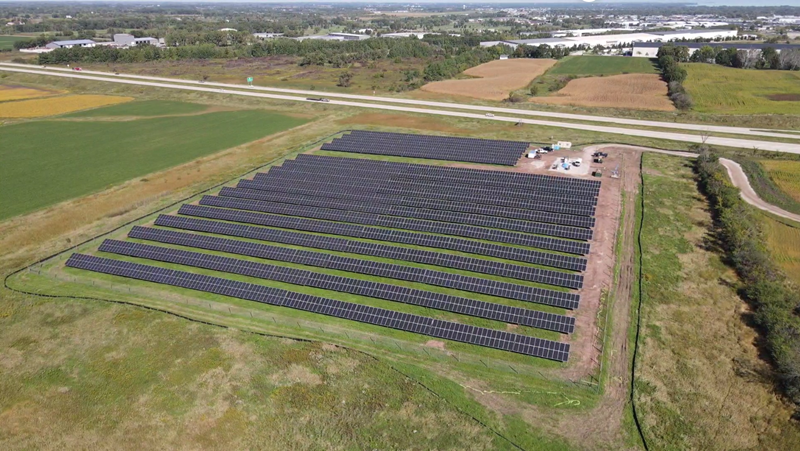It’s no wonder solar power is one of the fastest growing sources of energy nationwide—in just five minutes, enough sunlight shines on the continental U.S. to satisfy our electricity demand for an entire month. However, the challenge comes in figuring out the best method and location for capturing it. Fortunately, as part of our Clean Energy Blueprint, we work together with the agriculture industry, labor groups and landowners to do just that.
As we work to construct more solar projects in Iowa and Wisconsin, we communicate proactively with the public, elected officials and local community members to ensure the results benefit the communities we serve. A big part of that collaboration is making sure we select the best possible locations to construct our solar projects.
What makes a good solar project site?
The process for selecting solar project sites begins when there is mutual interest between Alliant Energy and willing landowners and farmers who want to lease their land for a solar project. If their property meets our criteria, we then work collaboratively with them to develop a solar site that works in harmony with their land and the environment. Here are a few of the things we consider when siting our solar projects.
Project size vs. parcel size
Like any new construction, all solar projects require space. On average, it takes five to seven acres of land to produce one megawatt of solar energy. Utility-scale solar projects allow us to leverage economies of scale to deliver the maximum amount of energy and provide the most benefits to our customers—but that doesn’t always mean bigger is better.
When evaluating land for a potential solar project, we consider a number of factors for each individual location to determine the overall size of the completed project, including how much continuous connected land is available, transmission capacity and the amount of energy our customers need in the area.
Topography and access
The next consideration when evaluating land is its topographical shape and if it’s readily accessible. Ground-mount solar arrays are simpler to install on level land, but having less-than-flat fields isn’t necessarily a deal-breaker. Most sites include some level of hilliness, and that’s ok—there are mounting options designed specifically for slopes, grades and hills. However, sites with severe gradation fluctuations may not be cost-effective to develop.
Being able to easily access the site is also important, both from an initial construction standpoint and for routine maintenance and upkeep throughout the life of the solar project. Additionally, energy generation at solar sites is most effective when the site is located in close proximity to a grid connection. Reducing the distance between energy generation and distribution increases solar energy’s cost-effectiveness.
Environmental considerations
Considering the environmental impacts of a solar site are a vital part of our evaluation process. Trained experts perform wildlife studies at proposed sites to ensure solar development in the area minimizes impact to wildlife. We’re also careful to avoid siting on environmentally-sensitive land, such as forests, wetlands and rare species habitats.
Our dedication to protecting the environment around our solar sites doesn’t stop once the project is constructed. We install woven wire fencing around the perimeter of solar sites to help keep larger animals like deer away from any wiring within the array. We also use site-specific native vegetation under and around solar panels to create a habitat for pollinators. A comprehensive vegetation management program helps reduce the need for herbicides and mowing throughout the life of the project.
A partnership for the future
As we move forward in our transition to a clean energy future, we’re excited to partner with landowners and communities to share the benefits of solar energy with everyone we serve. If you’re interested in leasing your land as part of this important mission, check out our resources for interested landowners.

